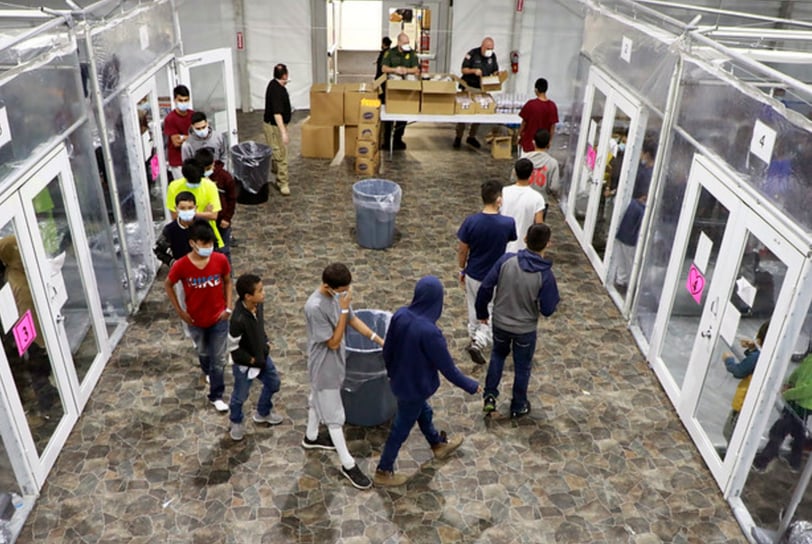Uncovering ORR Oversight Issues: Protecting Migrant Children in a Strained System
6/17/20254 min read


Uncovering ORR Oversight Issues: Protecting Migrant Children in a Strained System
Category: Deep Dives | Sub-Category: Behind the Headlines | insightoutvision.com
Introduction: A System Under Scrutiny
The Office of Refugee Resettlement (ORR), tasked with caring for unaccompanied migrant children at the U.S. border, has faced growing criticism for oversight lapses that leave vulnerable kids at risk. High-profile claims, like those from Robert F. Kennedy Jr. alleging HHS complicity in child trafficking, have thrust ORR’s challenges into the spotlight. While such accusations lack evidence, real issues—lax sponsor vetting, inconsistent follow-ups, and strained resources—demand attention. At InsightOutVision.com, we dive into ORR’s oversight problems, their causes, and solutions to ensure child safety. Let’s explore the facts behind the headlines.
What Is ORR, and What Does It Do?
ORR, a division of the U.S. Department of Health and Human Services (HHS), manages unaccompanied migrant children apprehended at the border. These minors, often fleeing violence or poverty, are placed in ORR custody until they can be released to sponsors—typically family members—while awaiting immigration hearings. In 2023, ORR processed over 130,000 children, a record high driven by surges in migration from Central America.
ORR’s responsibilities include:
Housing children in shelters or foster care.
Vetting sponsors to ensure safe placements.
Conducting post-release follow-ups (when feasible).
Coordinating with immigration courts.
Despite its critical role, ORR’s oversight mechanisms have struggled to keep pace with demand, raising concerns about child welfare.
Key Oversight Issues
Inadequate Sponsor Vetting
A 2023 New York Times investigation revealed that some ORR sponsors placed children in exploitative labor situations, such as factories or construction sites. While ORR requires background checks, resource constraints often limit vetting to basic criminal records, missing red flags like overcrowded homes or unrelated sponsors. A 2022 HHS Inspector General report found that 20% of sponsor screenings lacked documentation of safety assessments, increasing risks of abuse or neglect.Limited Post-Release Follow-Ups
ORR’s policy mandates 30-day follow-up calls for some children, but these are not universal. In 2023, only 37% of released children received follow-up checks due to staffing shortages and high caseloads. A 2022 whistleblower report from a California ORR facility flagged cases where children lost contact after placement, with no mechanism to track them. This gap fuels perceptions of “missing” kids, though experts like Aaron Reichlin-Melnick note most are likely with family but untracked due to bureaucratic errors.Overburdened Facilities
ORR shelters, often contracted to private organizations, face overcrowding and understaffing. A 2021 surge in arrivals led to emergency facilities, like one in Fort Bliss, Texas, where children reported poor conditions, including inadequate food and mental health support. A 2024 DHS report cited inconsistent oversight of these contractors, with some failing to meet safety standards.Data and Tracking Failures
ORR’s outdated data systems struggle to track children post-release. The 2024 DHS report noted 291,000 minors didn’t receive court notices, and 32,000 missed hearings, creating a “missing” label that’s often a paperwork glitch. This fuels misinformation, as seen in RFK Jr.’s claims, but also highlights real gaps in coordination between ORR, DHS, and immigration courts.
Why These Issues Persist
Resource Strain: ORR’s budget, $10 billion in 2023, hasn’t kept up with migration surges. Staff shortages and high turnover hinder thorough vetting and follow-ups.
Policy Inconsistencies: Both Biden and Trump administrations faced criticism—Biden for lax tracking, Trump for 2018 family separations that lost thousands of children. Political shifts disrupt long-term fixes.
Complex Migration Patterns: Many children arrive without documentation or clear family contacts, complicating placements.
Public Pressure: Sensationalized narratives, like trafficking conspiracies on X, push ORR to expedite releases, sometimes at the cost of thorough vetting.
Real Risks to Children
Oversight lapses have consequences. The New York Times reported cases of children as young as 12 working dangerous jobs post-release, some under coercive sponsors. A 2023 ORR whistleblower alleged that some minors were placed with non-relatives who later exploited them. While systemic trafficking lacks evidence, these incidents show how gaps in oversight expose kids to harm.
Steps Toward Solutions
Enhanced Vetting: ORR could adopt stricter sponsor checks, including home visits and income verification, though this requires more funding.
Mandatory Follow-Ups: Expanding post-release calls or caseworker visits could ensure child safety but demands additional staff.
Better Data Systems: Upgrading ORR’s tracking technology to sync with DHS and courts could reduce “missing” labels.
Contractor Accountability: Stronger audits of shelters and clearer safety standards could improve conditions.
Bipartisan Commitment: Long-term funding and policy stability, free from political swings, are essential.
Recent efforts show promise. In 2025, ORR announced pilot programs for extended follow-ups in high-risk cases, and RFK Jr.’s HHS leadership has pledged to prioritize tracking. However, without evidence-based reforms, rhetoric risks outpacing results.
Why It Hits Home
ORR’s oversight issues resonate because they involve society’s most vulnerable: children seeking safety. Failures erode trust in institutions, while exaggerated claims, like those on X praising or condemning ORR, deepen division. Fixing the system requires balancing compassion with accountability, ensuring kids aren’t caught in bureaucratic or political crossfire.
Questions to Ponder
How can ORR balance speed and safety in placing migrant children with sponsors?
What role should technology play in improving ORR’s tracking of children post-release?
Can bipartisan solutions overcome the politicization of migrant child welfare?
Conclusion: Protecting Kids, Rebuilding Trust
ORR’s oversight challenges—lax vetting, limited follow-ups, and strained resources—expose migrant children to real risks, though not the conspiracies some claim. At InsightOutVision.com, we urge readers to demand practical reforms over sensationalism. Migrant kids deserve safety, not headlines. Share your thoughts at insightoutvision.com—how can we fix this system?
Explore deep insights on current events and growth.
Vision
Truth
hello@insightoutvision.com
+1-2236036419
© 2025. All rights reserved.
